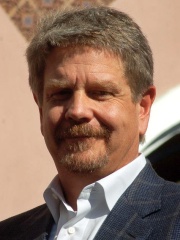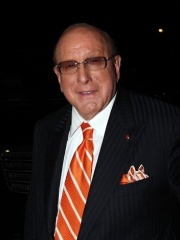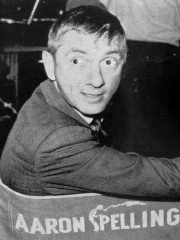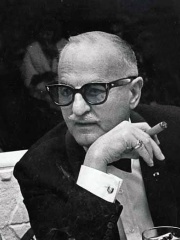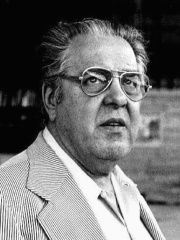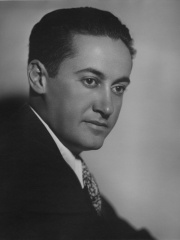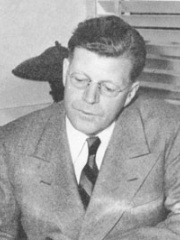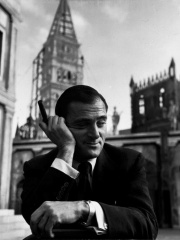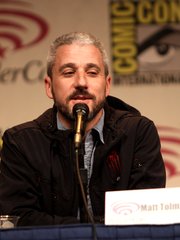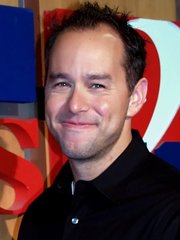
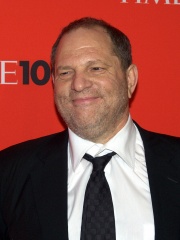

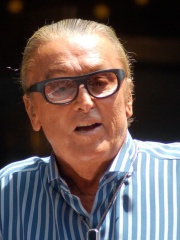
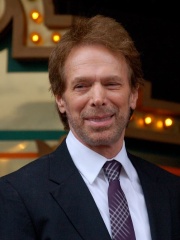
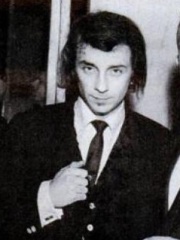
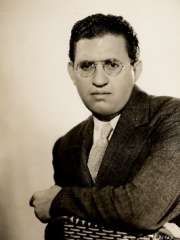
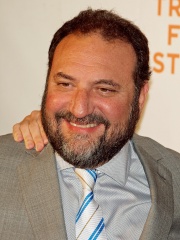
The Most Famous
PRODUCERS from United States
This page contains a list of the greatest American Producers. The pantheon dataset contains 140 Producers, 94 of which were born in United States. This makes United States the birth place of the most number of Producers.
Top 10
The following people are considered by Pantheon to be the top 10 most legendary American Producers of all time. This list of famous American Producers is sorted by HPI (Historical Popularity Index), a metric that aggregates information on a biography's online popularity. Visit the rankings page to view the entire list of American Producers.

1. Walt Disney (1901 - 1966)
With an HPI of 84.61, Walt Disney is the most famous American Producer. His biography has been translated into 170 different languages on wikipedia.
Walter Elias Disney ( DIZ-nee; December 5, 1901 – December 15, 1966) was an American animator, film producer, voice actor, and entrepreneur. A pioneer of the American animation industry, he introduced several developments in the production of cartoons. As a film producer, he holds the record for most Academy Awards won (22) and nominations (59) by an individual. He was presented with two Golden Globe Special Achievement Awards and an Emmy Award, among other honors. Several of his films are included in the National Film Registry by the Library of Congress and have also been named as some of the greatest films ever by the American Film Institute. Born in Chicago in 1901 and raised largely in Missouri, Disney developed an early interest in drawing. He took art classes as a boy and took a job as a commercial illustrator at the age of 18. He moved to California in the early 1920s and set up the Disney Brothers Studio (now the Walt Disney Company) with his brother Roy. With Ub Iwerks, he developed the character Mickey Mouse in 1928, his first highly popular success; he also provided the voice for his creation in the early years. As the studio grew, he became more adventurous, introducing synchronized sound, full-color three-strip Technicolor, feature-length cartoons and technical developments in cameras. The results, seen in features such as Snow White and the Seven Dwarfs (1937), Pinocchio, Fantasia (both 1940), Dumbo (1941), and Bambi (1942), furthered the development of animated film. New animated and live-action films followed after World War II, including Cinderella (1950), Sleeping Beauty (1959), and Mary Poppins (1964), the last of which received five Academy Awards. In the 1950s, Disney expanded into the theme park industry, and in July 1955 he opened Disneyland in Anaheim, California. To fund the project he diversified into television programs, such as Walt Disney's Disneyland and The Mickey Mouse Club. He was also involved in planning the 1959 Moscow Fair, the 1960 Winter Olympics, and the 1964 New York World's Fair. In 1965, he began development of another theme park, Disney World, the heart of which was to be a new type of city, the "Experimental Prototype Community of Tomorrow" (EPCOT). Disney was a heavy smoker throughout his life and died of lung cancer in 1966 before either the park or the EPCOT project were completed. Disney was a shy, self-deprecating and insecure man in private but adopted a warm and outgoing public persona. He had high standards and high expectations of those with whom he worked. Although there have been accusations that he was racist or antisemitic, they have been contradicted by many who knew him. The historiography of Disney has taken a variety of perspectives, ranging from views of him as a purveyor of homely patriotic values to being a representative of American cultural imperialism. Widely considered to be one of the most influential cultural figures of the 20th century, Disney remains an important presence in the history of animation and in the cultural history of the United States, where he is acknowledged as a national cultural icon. His film work continues to be shown and adapted, the Disney theme parks have grown in size and number around the world and his company has grown to become one of the world's largest mass media and entertainment conglomerates.

2. Harvey Weinstein (b. 1952)
With an HPI of 78.95, Harvey Weinstein is the 2nd most famous American Producer. His biography has been translated into 54 different languages.
Harvey Weinstein (; born March 19, 1952) is an American former film producer and convicted sex offender. In 1979, Weinstein and his brother, Bob Weinstein, co-founded the entertainment company Miramax, which produced several successful independent films including Sex, Lies, and Videotape (1989); The Crying Game (1992); Pulp Fiction (1994); Heavenly Creatures (1994); Flirting with Disaster (1996); and Shakespeare in Love (1998). Weinstein won an Academy Award for producing Shakespeare in Love and also won seven Tony Awards for plays and musicals including The Producers, Billy Elliot the Musical, and August: Osage County. After leaving Miramax, Weinstein and his brother Bob founded the Weinstein Company (TWC), a mini-major film studio. He was co-chairman, alongside Bob, from 2005 to 2017. In October 2017, following sexual abuse allegations dating back to the late 1970s, Weinstein was dismissed from his company and expelled from the Academy of Motion Picture Arts and Sciences. More than 80 women made allegations of sexual harassment or rape against him by October 31. The allegations sparked the #MeToo social media campaign and subsequent sexual abuse allegations against many powerful men worldwide; this phenomenon is referred to as the "Weinstein effect". In May 2018, Weinstein was arrested and charged with rape in New York City; in February 2020, he was found guilty of two of five felony counts. Weinstein was sentenced to 23 years in prison, and began serving his sentence. On July 20, 2021, Weinstein was extradited to Los Angeles to face further charges at a subsequent trial, where he was found guilty of three of seven charges on December 19, 2022. Weinstein was sentenced to 16 years in the Los Angeles trial, with his California prison term required to be served separately from his New York sentence. On April 25, 2024, the New York Court of Appeals overturned the New York rape convictions because of "egregious errors" of procedure, ordering a retrial. Weinstein remained in prison because of the California conviction. The retrial began on April 15, 2025. On June 11, 2025, Weinstein was convicted in a mixed verdict. On June 12, 2025, an additional rape charge case against Weinstein was given a mistrial.

3. Kathleen Kennedy (b. 1953)
With an HPI of 71.10, Kathleen Kennedy is the 3rd most famous American Producer. Her biography has been translated into 36 different languages.
Kathleen Kennedy (born June 5, 1953) is an American film producer who has been president of Lucasfilm since 2012. In 1981, Kennedy co-founded the production company Amblin Entertainment with Steven Spielberg and her eventual husband Frank Marshall. Her first film as a producer was E.T. (1982). A decade later, again with Spielberg, she produced the Jurassic Park franchise, the first two of which became two of the top ten highest-grossing films of the 1990s. In 1992, she and Marshall founded the Kennedy/Marshall Company. In 2012, Kennedy became the president of Lucasfilm after the Walt Disney Company acquired the company. As Lucasfilm's president, Kennedy has overseen the development, production, and release of projects such as the Star Wars sequel trilogy (2015–2019), the Star Wars standalone films Rogue One (2016) and Solo (2018) as well as the fifth Indiana Jones film, The Dial of Destiny (2023). She has also produced various Star Wars series including six live-action series for Disney+, The Mandalorian (2019–present), The Book of Boba Fett (2021), Obi-Wan Kenobi (2022), Andor (2022–2025), Ahsoka (2023–present), and The Acolyte (2024). Kennedy has produced films which have earned over $11 billion worldwide, including five of the fifty highest-grossing movies in film history. As a producer, she has received eight Best Picture Academy Award nominations.

4. Robert Evans (1930 - 2019)
With an HPI of 70.26, Robert Evans is the 4th most famous American Producer. Her biography has been translated into 23 different languages.
Robert Evans (born Robert J. Shapera; June 29, 1930 – October 26, 2019) was an American film producer, studio executive, and actor who worked on Rosemary's Baby (1968), Love Story (1970), The Godfather (1972), and Chinatown (1974). Evans began his career in a successful business venture with his brother Charles Evans, selling women's apparel. In 1956, while on a business trip, he was by chance spotted by actress Norma Shearer, who thought he would be right to play the role of her late husband Irving Thalberg in Man of a Thousand Faces (1957). Thus he began a brief film acting career. In 1962, Evans went into film producing instead, using his accumulated wealth from the clothing business, and began a meteoric rise in the industry. He was made head of Paramount Pictures in 1967. While there, he improved the ailing Paramount's fortunes through a string of commercially and critically acclaimed films. In 1974, he stepped down to produce films on his own. In 1980, Evans's career, and life, took a downturn after he pled guilty to cocaine trafficking. Over the next 12 years, he produced only two films, both financial flops: The Cotton Club (1984) and the Chinatown sequel The Two Jakes (1990). In 1993, he produced films on a more regular basis, with a mixed track record that included both flops (such as Jade in 1995) and hits (such as How to Lose a Guy in 10 Days in 2003, his final film credit).

5. Rick Rubin (b. 1963)
With an HPI of 69.79, Rick Rubin is the 5th most famous American Producer. His biography has been translated into 43 different languages.
Frederick Jay Rubin (, ROO-bin; born March 10, 1963) is an American record producer. He is a co-founder of Def Jam Recordings, founder of American Recordings, and former co-president of Columbia Records. Rubin helped popularize hip hop by producing records for pioneering acts such as LL Cool J, the Beastie Boys, Run-DMC, Public Enemy and Geto Boys. He has also produced hit records for acts from a variety of other genres, such as pop (Kesha, Adele, Ed Sheeran, Lady Gaga), heavy metal (Danzig, Metallica, Slayer), alternative rock (The Cult, Red Hot Chili Peppers, Rage Against the Machine, the Strokes, Weezer), hard rock (Audioslave, AC/DC, Aerosmith), nu metal (Linkin Park, System of a Down, Slipknot), and country (Johnny Cash, The Avett Brothers, the Chicks, Tyler Childers). He also worked with Kid Rock in 2010 for his album Born Free. In 2007, Rubin was called "the most important producer of the last 20 years" by MTV and was named on Time's 2007 list of the "100 Most Influential People in the World".

6. Jerry Bruckheimer (b. 1943)
With an HPI of 67.74, Jerry Bruckheimer is the 6th most famous American Producer. His biography has been translated into 43 different languages.
Jerome Leonard Bruckheimer (born September 21, 1943) is an American film and television producer. He has been active in the genres of action, drama, comedy, fantasy, horror and science fiction. After working in advertising out of college, Bruckheimer moved into film production in the 1970s. In the 1980s and 1990s, he partnered with fellow producer Don Simpson. Bruckheimer and Simpson's partnership continued until Simpson's death in 1996. Bruckheimer has produced films including Flashdance, Days of Thunder, The Rock, Crimson Tide, Dangerous Minds, Con Air, Armageddon, Enemy of the State, Pearl Harbor, Black Hawk Down, as well as the Beverly Hills Cop, Top Gun, Bad Boys, Pirates of the Caribbean and National Treasure franchises. At the helm of his self-titled production company, he has produced films that have been produced in association with and distributed by numerous film studios such as Paramount Pictures, Sony Pictures and Disney, while his television works have been co-produced by Warner Bros. Television and CBS Studios. In July 2003, Bruckheimer was honored by Variety as the first in Hollywood history to produce the first and second highest-grossing films of a single weekend: Pirates of the Caribbean: The Curse of the Black Pearl and Bad Boys II. In 2023, Top Gun: Maverick earned him his first nomination for Best Picture at the 95th Academy Awards. His best known television series are television dramas CSI: Crime Scene Investigation, CSI: Miami, CSI: NY, CSI: Cyber, Without a Trace, Cold Case, Lucifer and reality competition series The Amazing Race, which would spawn a franchise with international versions. For the latter, he won ten Primetime Emmy Awards. In 2003, three of his television productions—CSI: Crime Scene Investigation, Without a Trace and CSI: Miami—ranked among the top ten in the US ratings, making him the first producer to achieve this. Bruckheimer is also the co-founder (with David Bonderman) and majority owner of the Seattle Kraken, the 2021 expansion team of the National Hockey League.

7. Phil Spector (1939 - 2021)
With an HPI of 67.66, Phil Spector is the 7th most famous American Producer. His biography has been translated into 47 different languages.
Harvey Phillip Spector (December 26, 1939 – January 16, 2021) was an American record producer and songwriter primarily known for his Wall of Sound production style in the 1960s, followed by his trials and imprisonment for murder after the 2000s. Considered the first music producer auteur, he is widely regarded as one of the most influential figures in pop music history and the most successful producer of the 1960s. Born in the Bronx, Spector relocated to Los Angeles as a teenager and co-founded the Teddy Bears in 1958, writing their chart-topping single "To Know Him Is to Love Him". Mentored by Jerry Leiber and Mike Stoller, by 1961, he co-established Philles Records, becoming the youngest U.S. label owner at the time. He exerted unprecedented control over recording and marketing, and he typically worked in collaboration alongside arranger Jack Nitzsche, engineer Larry Levine, and numerous professional songwriting teams. His studio band, later known as the Wrecking Crew, rose to industry prominence through his success with acts like the Crystals, the Ronettes, and the Righteous Brothers. After producing Ike & Tina Turner's "River Deep – Mountain High", he temporarily withdrew from music. From 1970 to 1973, he produced the Beatles' Let It Be and solo recordings by John Lennon and George Harrison. He was also briefly head of A&R at the band's Apple Records. By 1980, following album productions for Dion DiMucci (Born to Be with You), Leonard Cohen (Death of a Ladies' Man), and the Ramones (End of the Century), he had entered a period of semi-retirement. Spector ultimately produced nineteen U.S. top-ten singles, including four additional number-ones (the Crystals' "He's a Rebel", the Righteous Brothers' "You've Lost That Lovin' Feelin'", the Beatles' "The Long and Winding Road", and Harrison's "My Sweet Lord"). He is credited with having a significant impact on rock music, the girl group sound, and other trends associated with post-1960s popular music and studio-centric recording practice, including the professional function of record producers themselves. He also contributed to the development of music genres and movements such as psychedelia, art rock/pop, noise pop, and shoegaze. In 1989, he was inducted into the Rock and Roll Hall of Fame. After the 1980s, Spector remained largely inactive amid periods of reclusion, substance abuse, and erratic behavior. In 2009, he was convicted of murdering actress Lana Clarkson and sentenced to 19 years to life in prison, where he died in 2021.

8. David O. Selznick (1902 - 1965)
With an HPI of 66.58, David O. Selznick is the 8th most famous American Producer. His biography has been translated into 48 different languages.
David O. Selznick (born David Selznick; May 10, 1902 – June 22, 1965) was an American film producer, screenwriter and film studio executive who produced Gone with the Wind (1939) and Rebecca (1940), both of which earned him an Academy Award for Best Picture. He also won the Irving Thalberg Award at the 12th Academy Awards, Hollywood's top honor for a producer, in recognition of his shepherding Gone with the Wind through a long and troubled production and into a record-breaking blockbuster. The son and son-in-law of movie moguls Lewis J. Selznick and Louis B. Mayer, Selznick served as head of production at R.K.O. Radio Pictures and went on to become one of the first independent movie producers. His first wife was Mayer's daughter Irene Selznick, who became a highly successful Broadway producer after their divorce, and his second wife was Oscar-winning actress Jennifer Jones.

9. Joel Silver (b. 1952)
With an HPI of 64.51, Joel Silver is the 9th most famous American Producer. His biography has been translated into 22 different languages.
Joel Silver (born July 14, 1952) is an American film producer.

10. Gene Roddenberry (1921 - 1991)
With an HPI of 64.31, Gene Roddenberry is the 10th most famous American Producer. His biography has been translated into 52 different languages.
Eugene Wesley Roddenberry Sr. (August 19, 1921 – October 24, 1991) was an American television screenwriter and producer who created the science fiction series and fictional universe Star Trek. Born in El Paso, Texas, Roddenberry grew up in Los Angeles, where his father was a police officer. Roddenberry flew 89 combat missions in the Army Air Forces during World War II and worked as a commercial pilot after the war. Later, he joined the Los Angeles Police Department and began to write for television. As a freelance writer, Roddenberry wrote scripts for Highway Patrol, Have Gun – Will Travel, and other series, before creating and producing his own television series, The Lieutenant. In 1964, Roddenberry created the original Star Trek series, which premiered in 1966 and ran for three seasons. He then worked on projects including a string of failed television pilots. The syndication of Star Trek led to its growing popularity, resulting in the Star Trek feature films, which Roddenberry continued to produce and consult on. In 1987, the sequel series Star Trek: The Next Generation began airing on television in first-run syndication; Roddenberry was involved in the initial development but took a less active role after the first season due to ill health. He consulted on the series until his death in 1991. In 1985, Roddenberry became the first TV writer with a star on the Hollywood Walk of Fame. He was later inducted into the Science Fiction Hall of Fame and the Academy of Television Arts & Sciences Hall of Fame. Years after his death, Roddenberry was one of the first humans to have their ashes carried into earth orbit. (Upon reentry, the ashes were lost into the Pacific Ocean.) Star Trek has inspired films, books, comic books, video games and fan films set in the Star Trek universe.
People
Pantheon has 94 people classified as American producers born between 1880 and 2000. Of these 94, 58 (61.70%) of them are still alive today. The most famous living American producers include Harvey Weinstein, Kathleen Kennedy, and Rick Rubin. The most famous deceased American producers include Walt Disney, Robert Evans, and Phil Spector. As of April 2024, 11 new American producers have been added to Pantheon including Roy Lee, David Ellison, and Mary Parent.
Living American Producers
Go to all RankingsHarvey Weinstein
1952 - Present
HPI: 78.95
Kathleen Kennedy
1953 - Present
HPI: 71.10
Rick Rubin
1963 - Present
HPI: 69.79
Jerry Bruckheimer
1943 - Present
HPI: 67.74
Joel Silver
1952 - Present
HPI: 64.51
Dick Wolf
1946 - Present
HPI: 60.67
Marc Platt
1957 - Present
HPI: 60.27
Michael G. Wilson
1942 - Present
HPI: 58.38
John Wells
1956 - Present
HPI: 57.50
Gale Anne Hurd
1955 - Present
HPI: 57.09
Shonda Rhimes
1970 - Present
HPI: 56.99
Clive Davis
1932 - Present
HPI: 56.84
Deceased American Producers
Go to all RankingsWalt Disney
1901 - 1966
HPI: 84.61
Robert Evans
1930 - 2019
HPI: 70.26
Phil Spector
1939 - 2021
HPI: 67.66
David O. Selznick
1902 - 1965
HPI: 66.58
Gene Roddenberry
1921 - 1991
HPI: 64.31
Aaron Spelling
1923 - 2006
HPI: 63.92
Darryl F. Zanuck
1902 - 1979
HPI: 63.68
Albert R. Broccoli
1909 - 1996
HPI: 63.60
Irving Thalberg
1899 - 1936
HPI: 63.27
Don Simpson
1943 - 1996
HPI: 61.08
Fred Quimby
1886 - 1965
HPI: 60.17
Mike Todd
1909 - 1958
HPI: 58.56
Newly Added American Producers (2025)
Go to all RankingsRoy Lee
1969 - Present
HPI: 42.63
David Ellison
1983 - Present
HPI: 41.38
Mary Parent
1968 - Present
HPI: 40.30
Paul Tibbitt
1968 - Present
HPI: 40.18
Clark Spencer
1963 - Present
HPI: 40.08
Lauren Schmidt Hissrich
1978 - Present
HPI: 39.96
Matt Tolmach
HPI: 36.94
Nina Jacobson
1965 - Present
HPI: 36.87
Jennifer Todd
1969 - Present
HPI: 34.56
Jonas Rivera
1971 - Present
HPI: 33.71
Tucker Gates
1968 - Present
HPI: 22.07
Overlapping Lives
Which Producers were alive at the same time? This visualization shows the lifespans of the 25 most globally memorable Producers since 1700.




